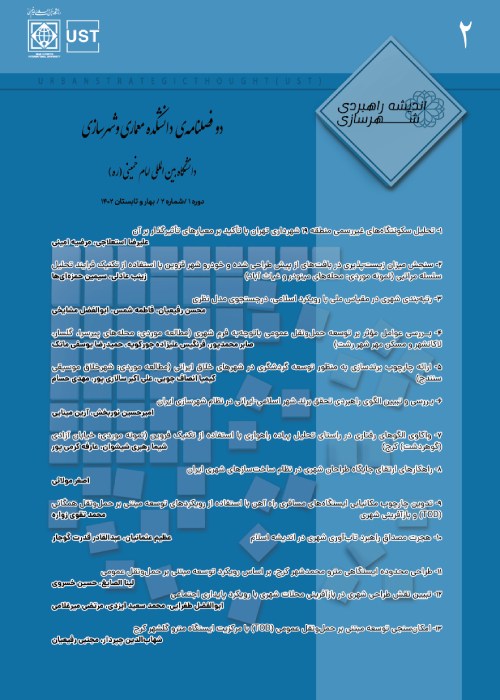Measuring the livability level in the pre-designed spontaneous of Qazvin city using the hierarchical analysis process technique (case study: Minoodar and Ghiyasabad neighborhoods)
Livability is one of the concepts that was raised at the same time as sustainability and is used together as a guiding principle for planning and urban planning policy. Paying attention to livability criteria in planning and designing cities and especially neighborhoods can create higher quality environments for citizens' lives. The purpose of this research is to investigate the livability level in two planned and unplanned contexts in Qazvin city. The current research has a descriptive-analytical quantitative approach. In this research, by studying the prevailing theoretical literature, seven main components were considered to measure the livability in residential areas, which are: social capital, economic justice, vitality, identity, compatible physical environment, access and context resilience. Then, using the available statistics, field survey and questionnaire, each of the parameters was measured in two contexts of the irregular (Ghiyasabad neighborhood) and pre-planned (Minoodar neighborhood). These two neighborhoods are at the same time in terms of their formation period, but different in terms of their formation method, and as a result, they have different physical, social, and cultural qualities, so they were selected for investigation. Then, for each of the 7 mentioned components, indicators and metrics were defined to make them measurable, and using the AHP technique, the components and indicators were weighted and the relative score of each of the target context was calculated. In the Analytical Hierarchy (AHP) method, after drawing the hierarchical tree, the weight of each of the criteria and indicators was calculated using a questionnaire that was provided to 21 experts and specialists in this field. The obtained weight was multiplied by the unscaled number of each index and finally the final weight of the options (in this research, Ghiyasabad and Minoodar neighborhoods) was obtained. The difference in the nature and quality of the physical, social and functional environment of these tissues has caused the difference in the livability of the neighborhoods. Based on the results, the livability of Ghiyasabad neighborhood as a contemporary unplanned fabric of Qazvin city is higher than Minoodar neighborhood with a planned fabric. It seems that One of the important reasons for the low level of livability in planned neighborhoods is the lack of attention to social-cultural issues in the design phase. In addition to the low level of social capital, the lack of collective spaces with local identity in the newly designed context of Minoodar neighborhood and the lack of functions and symbols of local indicators have caused a decrease in the sense of belonging among citizens. This review identifies planning priorities in these two contexts to achieve higher livability. Therefore, in the designed context, attention was paid to solutions for improving social capital, improving the vitality of the city environment and creating a unique identity. In the undesigned context, planning to improve the level of resilience and eliminate incompatible uses should be prioritized.
- حق عضویت دریافتی صرف حمایت از نشریات عضو و نگهداری، تکمیل و توسعه مگیران میشود.
- پرداخت حق اشتراک و دانلود مقالات اجازه بازنشر آن در سایر رسانههای چاپی و دیجیتال را به کاربر نمیدهد.


